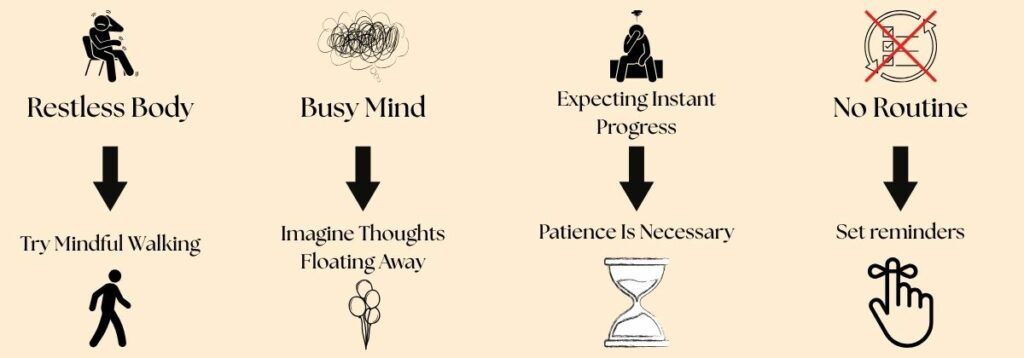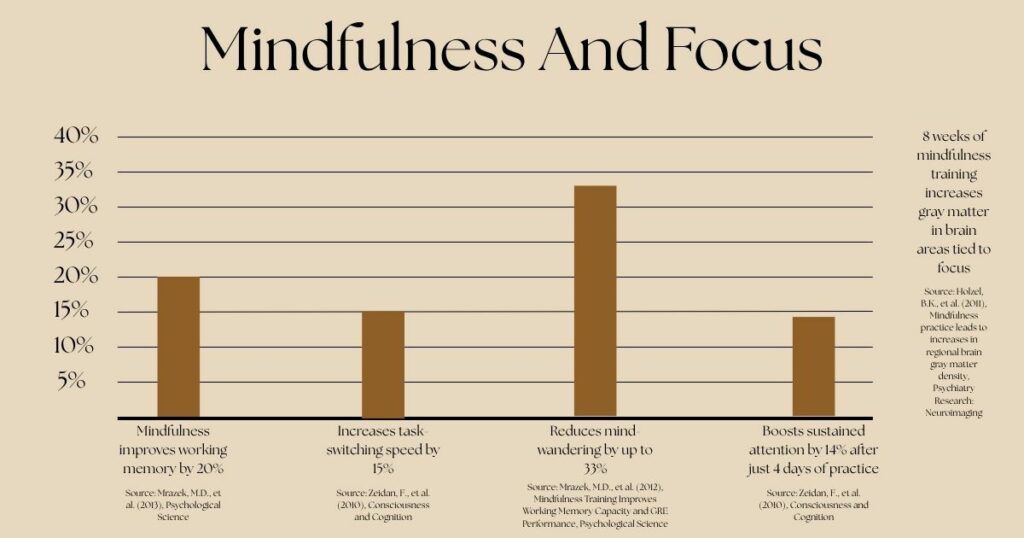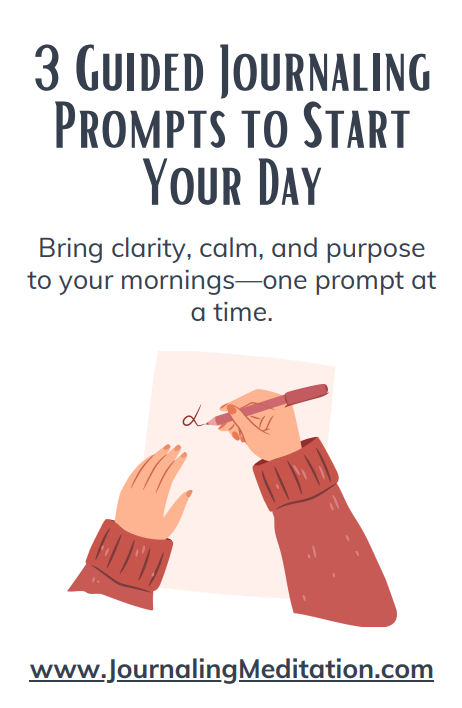Staying focused isn’t easy, especially with the all the distractions that are in our lives today. And mindfulness isn’t just about relaxing. It can be so much more. When used right, it can help you stay present, aware of and involved with the task at hand. No matter if you’re working, studying, or just trying to pay better attention in every day activities, using these mindfulness techniques for improving focus can make a big difference. This guide breaks down how mindfulness can help you improve your attention and offers some useful methods you can use every day.

Mindfulness and Why It Matters for Focus
When thinking of mindfulness, you may assume it means sitting quietly and being free of any thought. But you actually want to do the opposite. Instead of fighting to suppress the thought, be aware of it, just don’t give it any meaning.
Try to notice what’s happening around you and in your thoughts without getting sucked into the thought itself. Mastering this can be a great way to boost focus. When a useless thought creeps in, mindfulness helps you gently bring your attention back to just noticing the thought.
Research backs this up. Studies have shown that regular mindfulness practice can be responsible for improved attention, stronger memory, and even an ability to switch tasks quicker. More and more workplaces and schools now include mindfulness programs because they’ve found it pays off in productivity and helping students concentrate.
Starting Your Mindfulness Techniques for Improving Focus
Learning a new skill can be intimidating, especially with something as obscure as mindfulness. It’s so different from tactile like pushing through a to-do list. Starting with basic techniques can help make it less mysterious and simply a whole lot easier:

- Focused Breathing: This is just what it sounds like. Spend a minute or two noticing your breath. When thoughts pop up, simply acknowledge them, without deciding if they are good or bad, and bring your focus back to your breath. Even short stints of this exercise can help profoundly with focus.
- Body Scan Exercise: Sit or lie down. Notice any type of sensation in your body, from the top of your head to the tip of your toes. This practice will help keep you grounded in the present, especially if feeling antsy or distracted.
- Single Tasking: Multitasking can give us the illusion we are being productive. Truth is, it scatters focus and can waste time trying to reign in that focus with multiple tasks we’re working on. Try setting a timer and do just one thing. Writing, reading, or even washing dishes while paying full attention to the task at hand. This can really turn ordinary moments into opportunities for practice.
Quick Guide to Mindfulness for Sharper Focus
If you’re looking for some real practice, here’s a great way to start and explore mindfulness techniques. With regular, consistent practice, these little actions can turn into powerful habits:
- Pick a Time and Place: Try a few minutes first thing in the morning or before starting something stressful like work or presentation. Create a calm environment where you’re less likely to be interrupted by others.
- Set a Simple Intention: Before even starting, decide what you want to focus on. Is it your breath, sounds in the room, or even how your feet feel on the floor.
- Notice Distractions: Whenever your mind wanders, and it will, don’t judge it. Just notice where it went, and gently bring your focus back to an anchoring thought. An anchor is your breath or mantra (saying) that helps you come back to your intention.
- Use Your Senses: Ground yourself by noticing everything you can around you. What you see, hear, feel, or smell. This keeps you in the present moment and your attention out of your head.
- Practice Small: In the beginning, just go for 3-5 minutes at a time, 2 or 3 times a day. Over time, these little micro practices help build your “focus muscles.”
Join The Challenge Below!
Barriers to Mindfulness—and How I Work Through Them
When first starting out, everyone runs into hurdles. Distraction , impatience or self-judgment seem to always be present. These challenges plague all of us plenty of times, but here are some practical ways to handle the most common ones:
Restless Body
There will be plenty of times when just sitting still will be tough, especially early on. Walking meditation is a good substitute; walking slowly and focusing on the feeling of each step and your surroundings. Even slow, mindful stretching, noticing every movement, brings the same kind of awareness and can help keep your focus steady.
When you just can’t sit still, try mindful walking. Pay careful attention to each step as the sound of your feet make contact on the ground. Feel each step.
Busy Mind
Sometimes the mind just won’t quiet down. Instead of fighting the thoughts, try labeling them (“planning,” “worrying”) and steer your attention back to breath. This makes it easier to notice when focus is being lost—and over time, the thoughts become less disruptive.

Feeling overwhelmed with thoughts is normal, but doesn’t make you feel any better. Try to picture those thoughts floating by like clouds or away like balloons or leaves, and remind yourself not to chase them. Just watch.
Expecting Instant Progress
You may be hoping for dramatic change after one session, but soon will realize it’s a slow and steady process. Checking in every few weeks helps appreciate the subtle wins. Like being more focused at work or losing less time scrolling online.
Mindfulness is something you build over time, not instantly. Stick with the process, even when distracted, and avoid hard self-judgment. Have the patience you would have for a loved one.
Lack of Routine
Sticking to a routine is key. Find a time of day that works—maybe before lunch or right after waking up—and try to stick with it. Reminders on your phone or a sticky note can make practice easier to remember. The more and more you do this, the more natural it will become.
Mindfulness Troubleshooting Table

Advanced Mindfulness Tips for Better Focus
As you get more comfortable with the basics, adding extra techniques keeps things fresh and cam even prove to help be more effective:
Mindful Journaling: Writing a few sentences about where you lost focus, or what brought it back, can help spot patterns. Over weeks, you may start to figure out issues such as triggers and what methods work best to address them.
Visualization: Before getting started on a task, picture yourself moving through it with strong focus, gently brushing away distractions. The brain gets used to this process over time. It’s like rehearsing before a big event, so you’re ready for real situations.
Guided Meditations: There are tons of apps or online clips that offer quick meditations to boost focus. Try listening for a few minutes whenever you need help getting into the zone. YouTube is a great source.
Anchor Objects: Keeping a stone, bracelet, or another small object nearby to help give a physical nudge to come back to an anchoring thought if attention wanders.
Experiment and mix things up, depending on what the day has in store. The real trick is picking a few approaches that feel easy, sticking with them, and giving yourself credit for small wins as you go.
Check Out These 18 Tools For Mindful Journaling
Mindfulness Techniques in Everyday Life
Some of the best results from using mindfulness techniques can occur at points of real distraction. Just before a meeting, at the start of a study session, or even when stuck in traffic. These moments make mindfulness feel practical, useful and can help keep your attention sharper. Real-world ways to use mindfulness include:
- Work or Study Sessions: Begin by focusing your breath for one minute, then set a purpose (like finishing a chapter or replying to emails), and check in every 10 minutes or so to see if your staying on target.
- Conversations: Aim to really listen fully to whoever is talking, keeping focus on their words and body language, instead of planning what to say next.
- Daily Chores: While doing tasks like washing dishes or folding laundry, pay attention to the feel, sounds, or colors involved. This can train you to focus, even on regular activities.

Frequently Asked Questions
People often have more questions about mindfulness techniques for improving focus, so here are some answers to a few asked most often:
How to practice mindfulness to improve focus?
Start with a couple of minutes of focused breathing or a short guided meditation. When distractions pop up, steer your attention back gently to either a centering thought or your breath. Make it a daily habit, and toss in mindful activities like focused breathing or mindful walking to keep building that focus muscle.
What are the 5 R’s of mindfulness?
The 5 R’s are:
- Recognize (notice distractions)
- Relax (let go of stress)
- Return (re-center your attention)
- Refrain (skip self-judgment)
- Repeat (keep at it).
These steps walk you through bringing attention back, no matter how much your mind drifts.
What are the 3 C’s of mindfulness?
The 3 C’s include
- Curiosity (being open to what comes up)
- Courage (facing whatever shows up)
- Compassion (being kind to yourself)
This attitude helps you keep up your mindfulness practice and build steadier focus in the long run.
Question: What are the 4 P’s of mindfulness?
The 4 P’s are
- Pause (stop and take a breath)
- Presence (tune in to the now)
- Perspective (notice your thoughts from a distance)
- Proceed (move on with intention)
This is the perfect method to reset focus whenever you feel yourself ruminating.

Why Mindfulness Techniques for Improving Focus Work
Building mindfulness habits might feel tricky in the beginning, but with steady practice, it totally changes how one can find focus. It’s a tool to help break old cycles of drifting off or getting stuck in worry. More than just a trick, it’s about building a dependable way to be fully here and really give attention to the task on hand. With some consistency and these practical methods, sharper focus is within reach for anyone who’s up for giving mindfulness a real shot. Just keep experimenting, check in with yourself, and those bigger gains in focus will follow.





